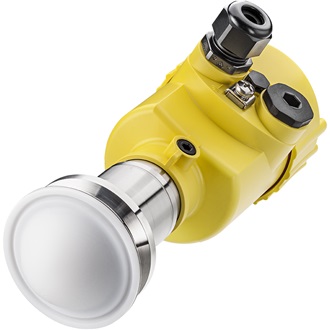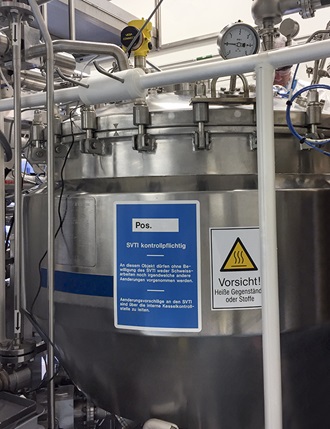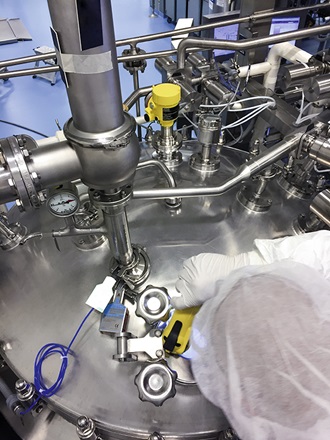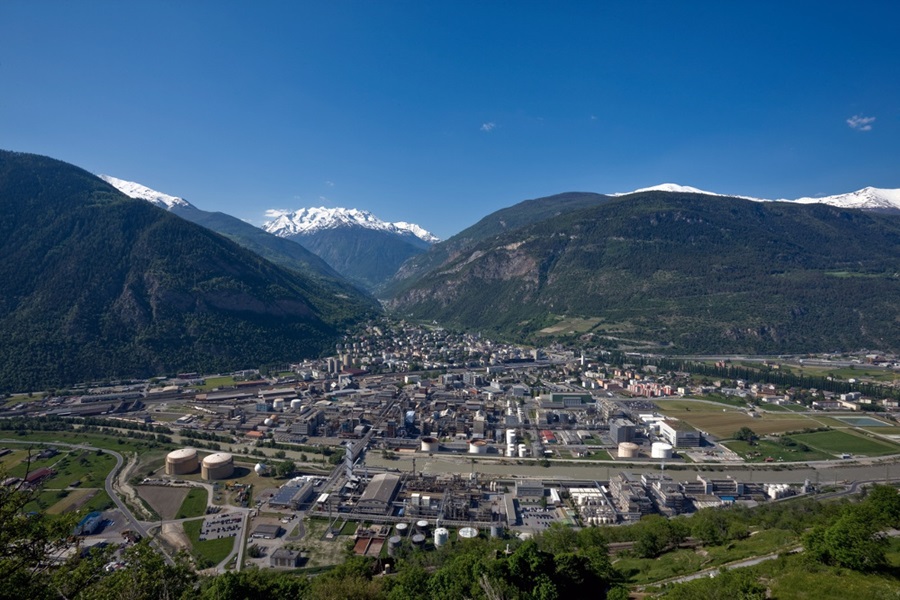Radar level sensors ensure optimal flow in slurry and UF tanks
Level measurement based on 80-GHz radar technology is independent of disturbing factors such as the vessel internals, foaming or build up on the reactor walls.
The extremely short wavelength of VEGAPULS 64 radar sensors enables a high-precision level control throughout the entire production process.
At Lonza, highly accurate VEGAPULS 64 radar level sensors measure this solution in the so-called slurry tanks. Their measuring results form the basis for an exact concentration during "packing". The more accurate the level measurement, the more accurately the pack height can be calculated or estimated. Exact level readings influence both the yield and quality of these highly individualised and protected substances.
In the UF tank, ultrafiltration or diafiltration takes place, in which solutions are concentrated into widely varying volumes. VEGAPULS 64 radar sensors continuously ensure the correct level, i.e. volume, in the stirring tank, which can fluctuate by several hundred litres during a batch run. Part of the filtration process is the periodically repeated addition and removal of small quantities of RedOx buffering solution. These level changes are also precisely monitored and controlled by means of level measurement, in order to ensure the desired volume spectrum.
Until recently, the Swiss company had been using conventional differential pressure systems for measurement in bioprocesses. When the company put the 80-GHz radar sensor VEGAPULS 64 into operation - it was the first non-contact measuring system that could be installed so quickly and easily – no one had seen anything like it before. Completely without changes to existing equipment, and without additional accessories or fittings. The high-frequency radar instrument now detects the volume with a measurement accuracy of +/-1 mm. Another advantage of the radar level sensor: If retrofitted, VEGAPULS 64 can be installed on existing mounting sockets, making only minimal alterations necessary. Reliable measured values are then available in no time at all.
Application in the pharmaceutical industry – the advantages of VEGAPULS 64 at a glance:
- Aseptic process fittings guarantee certified safety in compliance with 3A, FDA, EHEDG
- Especially suitable for small pharmaceutical containers, thanks to the compact fittings
- The extremely short wavelength of the 80-GHz signals ensures optimal attenuation in the medium
- Unwanted reflections from the vessel bottom is so minor that level detection is possible during the process and even during emptying
- Production systems can be easily retrofitted; sensors can be installed on existing process fittings
Related industries

Pharmaceutical
Export this article
Download as PDFShare this article
Comments ({{comments.length}})
{{getCommentAuthor(comment, "Anonymous")}} {{comment.timestamp | date : "dd.MM.yyyy HH:mm" }}
{{comment.comment}}









